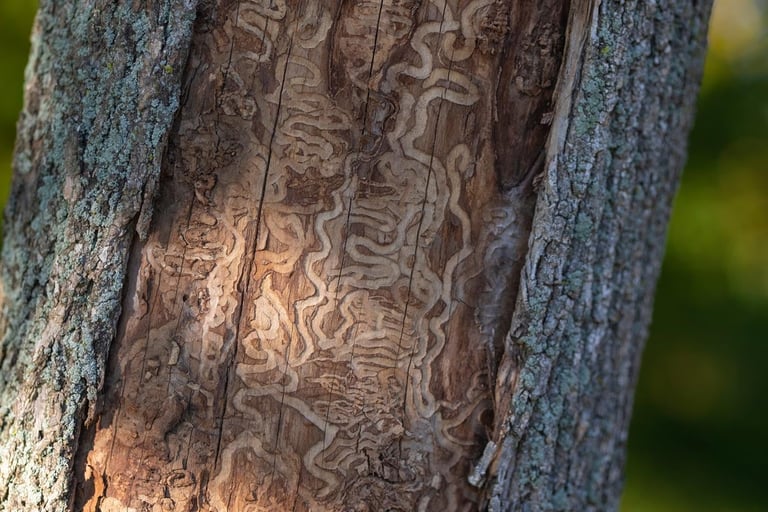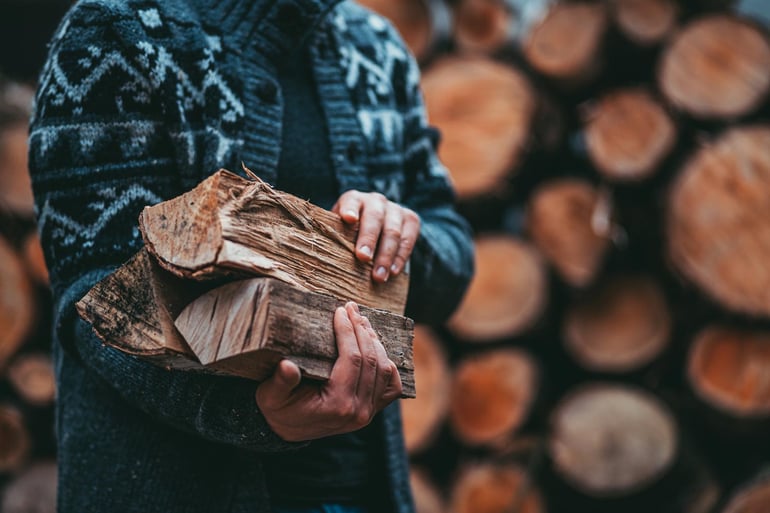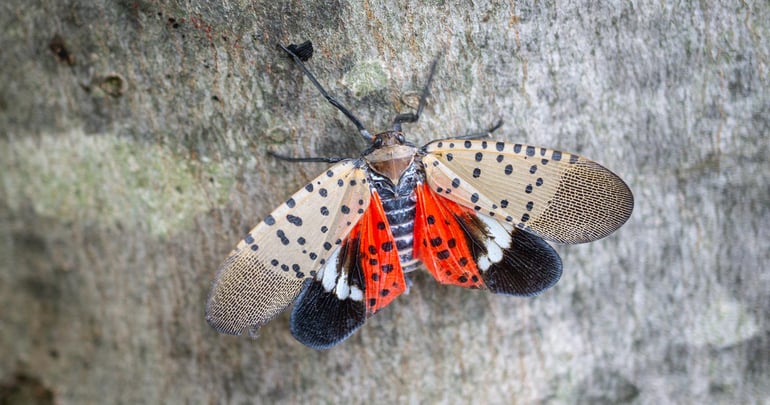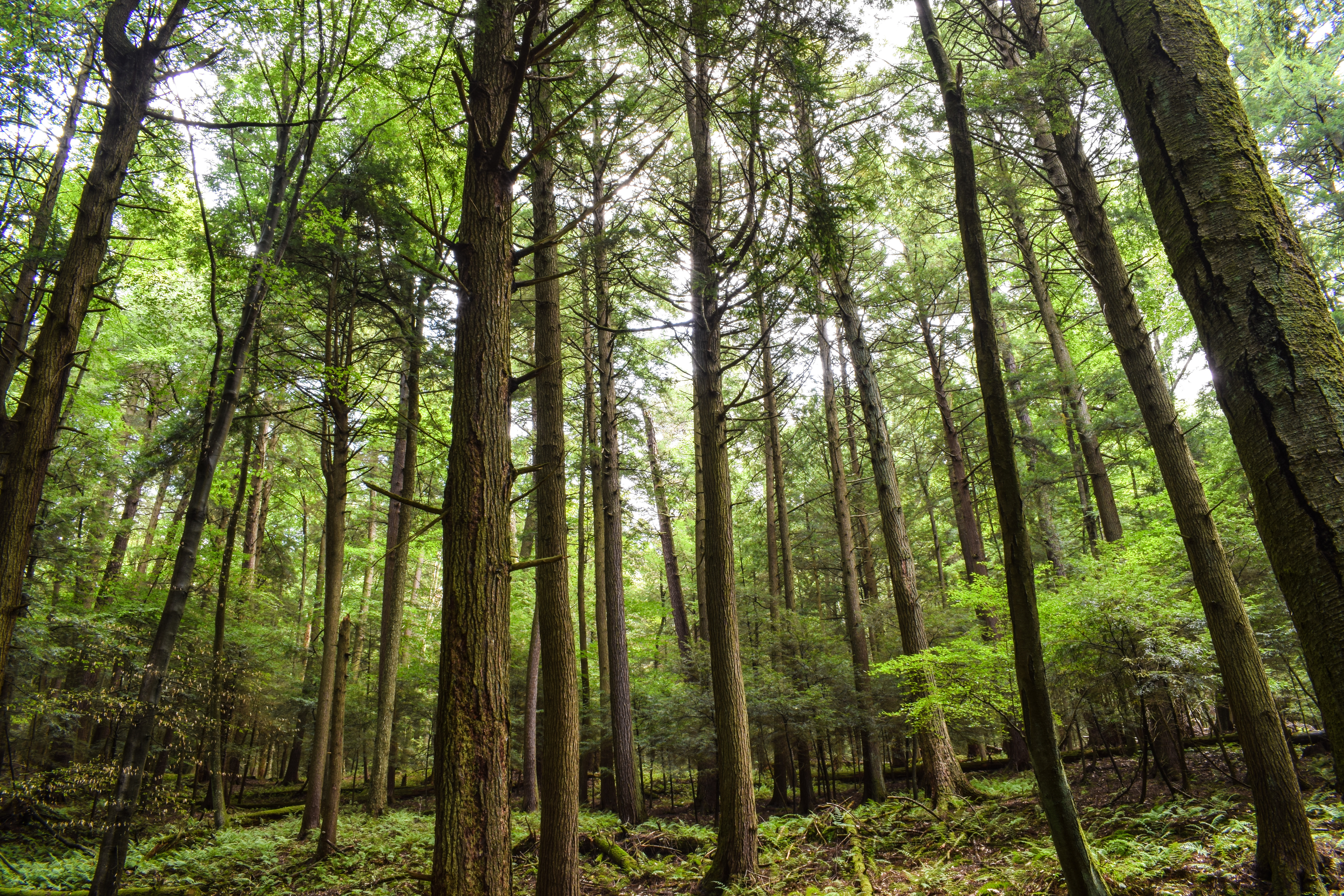They look so harmless: a bright green insect just half an inch long, a fragrant honeysuckle vine with deep green leaves growing along an embankment. But appearances can be deceptive. That insect might be an emerald ash borer, which has killed millions of ash trees in North America since it arrived less than two decades ago. The vine could be the fast-spreading Japanese honeysuckle, which changes the structure of the forests it invades and outcompetes native plants for light and resources.
Invasive species are non-native plants, animals, and microorganisms that reproduce rapidly outside of their normal growing range. Many invasive species are harmful because they displace native species and disrupt the ecosystem where they take hold. They can completely obliterate a tree species in a forest, destroy a watershed and destroy critical wildlife habitat.
 |
| Japanese Honeysuckle, an invasive species in the United States |
People often don’t recognize non-native, aggressive plant and insect species, and they are not aware of the danger that they pose to our ecosystems in the U.S. National Invasive Species Awareness Week (NISAW) is designed to bring attention to the problem and to help fill that knowledge gap.
NISAW is an annual event that actually takes place over two weeks. The first part, held February 22-28, 2021, features activities centered around national advocacy and education. During this time, representatives from local, state, federal, and regional organizations discuss legislation, policies, and practices that can help prevent and control the spread of invasive species. NISAW also offers webinars (free during that week only) with insights from invasive species experts on a variety of topics.
During the second part of NISAW, which will be held from May 17-23, 2021, the focus is on local activities. NISAW encourages individuals and organizations in communities throughout the country to join together in projects to help remove invasive species in their area and to educate area residents and decisions makers about why it’s so important to take action.
Why You Should Care About Invasive Species
There are about 43,000 aggressive and undesirable invasive species in the U.S. today, and every region of the country is impacted.
These aggressive invaders have a big financial impact, too. A frequently quoted study from 2005 found that invasive species were responsible for almost $120 billion per year in economic and environmental damage in the U.S. There’s little reason to believe the situation has improved over time. The USDA’s National Resources Conservation Service has noted that “over the past several years, the rate of introduction of invasive plants has risen significantly, degrading renewable resources, diminishing the productive capacity of agriculture lands and degrading wildlife habitat.”
If an invasive species gains a foothold in your woodlands, you could see the destruction of the trees that you love, fewer birds and animals on your property, and a significant reduction in your income due to the damage that they inflict.
 |
| Damage from an Emerald Ash Borer, an invasive species in the United States |
How You Can Help
As a forest owner, you can serve as part of the first line of defense against invasive species. Early detection and action are key to preventing their spread. If you can weed out a small patch of invasive plants or control invasive insects before they gain a foothold, you’re helping yourself and your community.
Here’s what you can do:
- Learn to identify the invasive species in your area. (See suggested resources below.)
- Monitor for pests and signs of disease every month or two during growing season. Check trees all over - trunk, limbs, twigs, leaves, and under peeling bark. You don’t have to check every tree, but do inspect different areas of your property.
- Document any suspicious areas. Take photos, gather samples of any affected areas, and make notes about what you’re seeing. If you find an insect that you suspect could be a problem, seal it in a container and store it in the freezer until you can get it to the proper authorities for identification.
- Get in touch with your local county extension agent or USDA office as soon as you can. The sooner you act, the easier it is to control the invaders.
- Work with the experts to develop an invasive species control plan for your land. That could involve anything from using pesticides to cutting down and burning an infected tree.
- If you’re planning on harvesting trees from your property, control the invasive species before you start. Otherwise, you could be spreading the invaders to other properties.
After working in your forest, clean your boots, equipment, and vehicles to prevent the spread of invasive seeds, spores and insects.
While you can’t always prevent invasive species from coming onto your land, you can make it less likely they’ll want to stay. Keep your trees healthy, maintain a diverse variety of tree species and use pesticides when appropriate.
One very basic practice that everyone should follow: don’t move firewood more than 10 miles from where it’s harvested. You could inadvertently be carrying an unwelcome hitchhiker - an invasive pest that could spread to another area.
The battle against invasive species begins with you. Educate yourself about these invaders, keep a close eye on your woodlands and follow best practices to ensure that your woodlands and others throughout the U.S. are protected.
For more information
WoodsCamp, a free online tool, is a good place to start your invasive species research if you live in Alabama, Florida, or Wisconsin where we are actively connecting landowners to help on the ground with removing invasive species. Other resources are available for forest owners in California, Pennsylvania, and South Carolina, with resources for more states coming soon.
Simply go to WoodsCamp.com, find your property on your state’s map, and answer a few questions about your goals for your land. WoodsCamp will connect you with resources that could be of help, possibly including a free visit from a forester, a free landscape management plan and financial assistance for rooting out non-native plant and insect invaders.
For more information about National Invasive Species Awareness Week (NISAW), check out these web pages:
- Webinar series
- Sign up for email updates about NISAW news and events.
- Get the toolkit with ideas and resources for local invasive species outreach activities.
Identifying and dealing with invasive species - Invasive.org has a variety of resources, including maps of where some invasive plants and insects are found, a library of invasive images and links to several other information websites.
- The USDA's National Invasive Species Information Center provides a list of resources by locations (multi-state and regional) and by subject. Categories include control and management, expert contacts, and grants and funding opportunities.
- The National Wildlife Federation dedicates a section of its website to invasive species
 |
| Spotted Lanternfly, an invasive species in the United States |
Connect with State Resources
Most states have at least one organization dedicated to fighting invasive species; it’s an easy online search. You’re likely to find departments of state government (fish and wildlife, agriculture, etc.), private organizations, and university extension services that can help you out with any questions you may have.
A few examples:
Alabama
California
Florida- Florida Department of Agriculture and Consumer Services – Invasive Non-Native Plants
- Invasive Insects, Arachnids, Mollusks and Gastropods
South Carolina
- Clemson University Invasive Species Program
- South Carolina Forestry Commission - Insects and Disease
- Wisconsin Department of Natural Resources - Invasive Species
- Invasive Plants Association of Wisconsin
Curious what programs or services your land is eligible for?
Find your property on our map and request
a free woodland report today!
*This post was written by Mary Lou Jay, a regular contributor to WoodsCamp blog and AFF's WoodLand Magazine.




We want to hear from you.